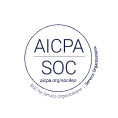
Stop shipping guesswork: How prelaunch testing cut 25% of iterations

Every product team knows the frustration of rework: revisiting features that didn’t land, redesigning flows that confused users, and rerouting development time to fix what testing could have caught.
Suffice to say, late-stage validation eats into timelines and slows innovation.
When usability issues surface after code is written, development velocity stalls. Deadlines slip, budgets stretch, and engineering talent is consumed by fixes rather than forward progress.
But here’s the better alternative. When teams run an early validation test, it has cut iteration cycles by 25% and saves millions in avoided rework. When seen from this perspective, prelaunch testing is no longer a nice-to-have but an engineering efficiency strategy.
The hidden drain on product velocity
Rework is one of the most underestimated costs in software development.
Every unnecessary sprint spent fixing usability issues delays delivery and strains developer capacity. Without early UX validation, teams often discover friction points only after release and fixing them costs exponentially more.
The impact ripples across KPIs that matter most to product and engineering leaders:
- Lost development velocity: Critical time is spent on post-launch fixes instead of new innovation.
- Increased sprint churn: Teams loop through multiple design-code-test cycles to patch gaps that earlier insight could have prevented.
- Missed delivery targets: Opportunity costs rise as roadmaps shift to address defects instead of advancing new features.
By contrast, organisations that validate designs before build can prevent these slowdowns entirely, protecting time-to-market and sustaining team momentum.
The Total Economic Impact™ Of UserTesting, a commissioned study by Forrester Consulting on behalf of UserTesting (August 2025), reveals how much organizations could potentially stand to gain by approaching user experience with UserTesting. The findings show that organizations investing in better usability and customer understanding have seen measurable business returns: a 415% ROI and $7.6 million in net present value over three years, and a payback period of less than six months.
TEI study
The Total Economic Impact™ Of UserTesting
The data: How early testing translates into real savings
The TEI study quantified the tangible impact of prelaunch testing for a composite enterprise based on interviewed customers using UserTesting:
- 25% fewer iteration cycles, driven by early design validation.
- $2.5 million in avoided developer rework over three years.
- 415% return on investment (ROI) and $7.6 million in net present value (NPV).
- Payback in less than six months.
By validating concepts and wireframes before development begins, product teams ensure engineering time is directed toward high-value work. The study found that avoided development cycles, valued at roughly $10,000 per sprint, led to nearly $2.5 in productivity gains over 3 years.
Beyond cost savings, early testing creates an operational buffer: it frees up developers to focus on innovation rather than rework and helps teams deliver better products faster.
Why prelaunch testing works
1. Early insight speeds up iteration
Testing wireframes and prototypes gives designers and product managers immediate, actionable feedback before a single line of code is written. Early visibility into user behaviour makes it easier to adjust designs in hours, not sprints.
2. Higher confidence, fewer course corrections
Watching how real users interact with a design brings clarity to discussions that often stall teams. Debates about “what users might do” give way to evidence everyone can see.
3. Smarter use of engineering time
Engineering teams work best when they’re building, not backtracking. Validating before build keeps them focused on the right priorities, saving time and protecting morale.
4. Continuous feedback keeps teams agile
Platforms like UserTesting make it possible to run tests across distributed teams and global markets, embedding customer feedback directly into agile workflows. The result: research becomes a natural extension of the development process, not a bottleneck.
Real-world results: Voices from the study
The benefits of prelaunch testing aren’t theoretical. They’re lived experiences from leaders across industries.
“We are saving ourselves from sending things out [that would have failed in market].” — Director of Design Operations, Software Industry
“We eliminate a whole bunch of wasted cycles by doing the testing upfront. We’re still going to A/B testing … but it cuts down on us wasting effort and capacity.” — Vice President of Digital Experience and Product, Consumer Packaged Goods Industry
It’s about building confidence in every release. Teams that test earlier make better decisions faster, with less friction and more focus on innovation.
Turning rework into innovation
Fewer post-release fixes mean more room for experimentation. When development teams aren’t bogged down by rework, they can reinvest time and energy into customer-driven initiatives.
Prelaunch testing encourages a proactive culture where decisions are grounded in data, not assumptions. Teams become more curious and confident because every sprint starts with clarity.
And because insights are tied to measurable outcomes (like reduced iteration cycles and higher conversion rates), it’s easier to demonstrate how prelaunch testing drives both efficiency and ROI. The TEI study found that improving usability alone generated $2.1 million in profit for the composite organisation over three years.
The takeaway for product and engineering leaders
Prelaunch testing isn’t merely a UX best practice; it’s a strategic lever for engineering efficiency and product velocity.
For leaders focused on delivering quality at speed, integrating customer insight during the design phase helps:
- Reduce rework by up to 25%.
- Reinvest saved capacity into innovation and experimentation.
- Align teams faster with real user data and shared visibility.
- Generate considerable ROI with fewer failed launches and reasonable payback periods.
It’s how teams hit deadlines without cutting corners and protect budgets without slowing down progress. The data speaks clearly: when you test early, you ship smarter.
Explore the commissioned Forrester Consulting study, The Total Economic Impact™ Of UserTesting, to see how organizations are quantifying the value of great experiences and preventing bad UX at scale.
Disclaimer: The Total Economic Impact™ Of UserTesting study is commissioned by UserTesting and delivered by Forrester Consulting. It is not meant to be used as a competitive analysis. Forrester does not endorse UserTesting or its offerings. The results are based on interviews with UserTesting customers and are representative of their experiences. Actual results may vary.





